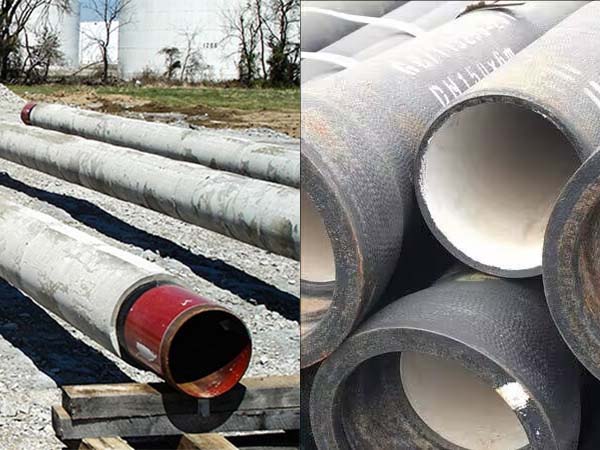In the application of steel pipes,
anti-corrosion and structural stability have always been two key considerations. To cope with the challenges in different environments, a series of anti-corrosion treatments are usually carried out on steel pipes.
Concrete lined steel pipe and
Cement lined steel pipe, as two common choices of steel pipes, each have their unique advantages and applicable scenarios.
Concrete lined steel pipe usually refers to coating a layer of concrete on the outside of the steel pipe (sometimes including coating different materials on the inside and outside), forming an integral structure of concrete coated steel, in order to provide additional weight, compressive resistance and anti-floating capacity, and is especially suitable for scenarios such as underwater pipelines and natural gas transportation.
Cement lined steel pipe is coated with a layer of cement mortar (usually with a thickness of 5-15mm) inside the steel pipe to form a physical isolation layer, which is mainly used for anti-corrosion and water quality protection. It is commonly used in systems such as tap water and sewage treatment.

Advantage comparison
Concrete lined steel pipe:
Heavy weight and strong anti-buoyancy: The concrete layer can provide negative buoyancy and is suitable for sinking on the seabed or soft base.
Enhance mechanical protection: Significantly improve the ability to withstand external shocks and pressure.
Cement lined steel pipe:
Outstanding anti-corrosion performance: The inner lining mortar effectively isolates the contact between corrosive media and steel pipes, demonstrating excellent resistance to acids, alkalis, and oxidants (such as ozone and chlorine).
Enhance flow efficiency: The inner wall is smooth, significantly reducing hydraulic losses and minimizing dredging work and energy consumption.
Improving water quality: A high pH environment effectively inhibits the formation of rust, ensuring that drinking water safety is not affected.
Limitations and Risks
Concrete lined steel pipe:
Weight issue: High transportation and installation costs, requiring the handling of large equipment.
Poor flexibility: Not suitable for frequent movement or bending situations.
Cement lined steel pipe:
Mortar is prone to peeling: In a bending or vibrating environment, mortar may crack or peel off, affecting the anti-corrosion effect.
Uneven thickness and porosity: The mortar has pores, and attention should be paid to the quality of pouring and curing.
Handling and transportation must be done with care: Improper handling can damage the inner lining and affect its service life.
Comparison of application scenarios
For large-diameter long-distance pipelines on the seabed, riverbed and underground: Concrete lined steel Pipes are preferred because they have excellent "anti-floating, anti-pressure and anti-external force" performance.
Urban water supply, anti-corrosion water transmission and sewage pipe networks: Cement lined steel pipes are usually adopted because they can effectively achieve "internal anti-corrosion, maintaining water quality and reducing flow resistance".
If anti-corrosion and clean transportation of ordinary water supply or acid and alkali corrosive media are required, it is recommended to use cement mortar lined steel pipes, and pay attention to the thickness of the mortar and the construction quality.
If the project involves buried laying in the sea or river or anti-floating and anti-compression loads, concrete-clad steel pipes should be given priority.
The two can be regarded as functionally complementary: one pays more attention to internal anti-corrosion, while the other focuses more on external mechanical and environmental effects.
